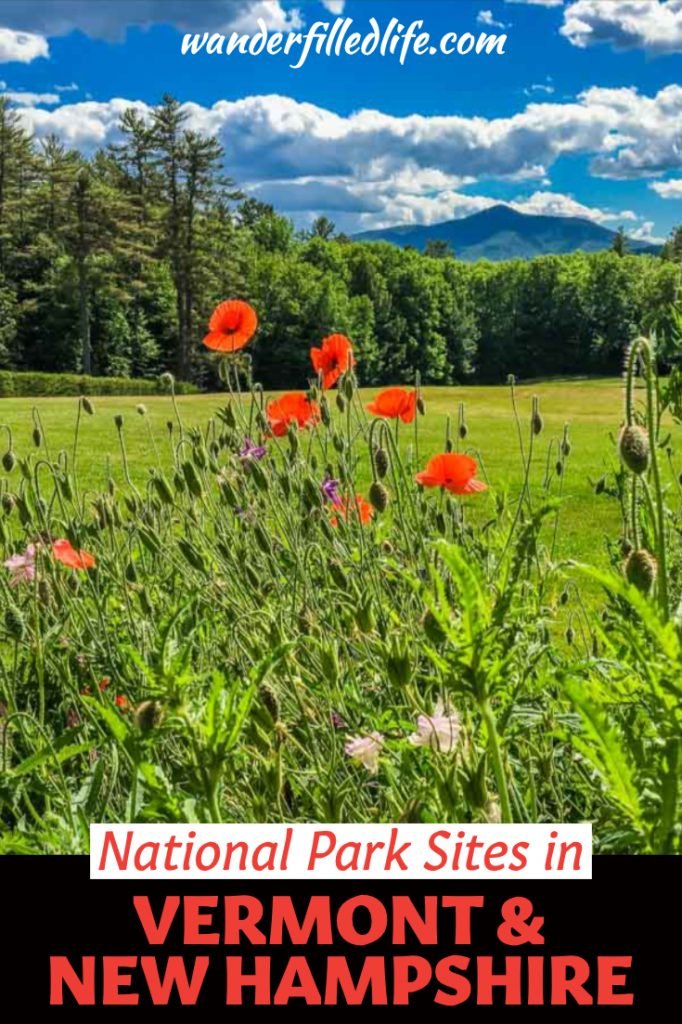Last Updated on September 5, 2023 by Grant
After several busy days in New York, we were ready for a slower pace of life. Thankfully, we found that in both Vermont and New Hampshire. Each state is home to one national park site, so that gave us plenty of time to explore other attractions during our visit. It also helps that both states are fairly small.
Wow. Just wow.
The countryside here is beautiful. It’s like someone crossbred a Robert Frost poem and a Norman Rockwell painting and planted the result and it grew in Vermont.
This was the first time either of us had visited Vermont or New Hampshire and we were immediately excited about our time here! After quickly setting up camp, we headed to our first park site, just across the New Hampshire state line.
Check out our full New England National Parks itinerary here.

The fun part of crossing over to New Hampshire is the Cornish-Windsor Bridge. Only in New England would crossing between two states be done in a covered bridge! This bridge is the longest wooden bridge in the U.S. and the longest two-span covered bridge in the world. Needless to say, it was supremely quaint.
(Disclaimer: When we link to places where you can buy our stuff or places we stayed, we are using special codes that earn us commissions on the sales at no additional cost to you. Please see our Review Policy for more information.)
Updated May 2019
Saint-Gaudens National Historical Park
We are certainly getting cultured in American artists on this trip through New England. First, Weir Farm NHS and now Saint-Gaudens NHP, located just across the Vermont border in Cornish, NH.
Read about our visit to Weir Farm NHS.

Augustus Saint-Gaudens was an Irish immigrant who came to the US as a child. Settling in New York City, he began his career as an apprentice cutting cameos. After studying in France (at the same school as Weir) and in Rome, he returned to the States. Saint-Gaudens received his first commission in 1876 to sculpt the Admiral David Farragut statue, located in Madison Square Park in New York City. He went on to sculpt masterpieces including the William T. Sherman Monument in Central Park, the Shaw Memorial in Boston and the Standing Lincoln in Chicago.
While I love painters, sculptors and their process fascinate me. When Bonnie and I visited the Accademia di Belle Arti di Firenze (in Florence, Italy), Michelangelo’s “David” amazed us. That said, seeing the unfinished works and how he worked impressed us the most.
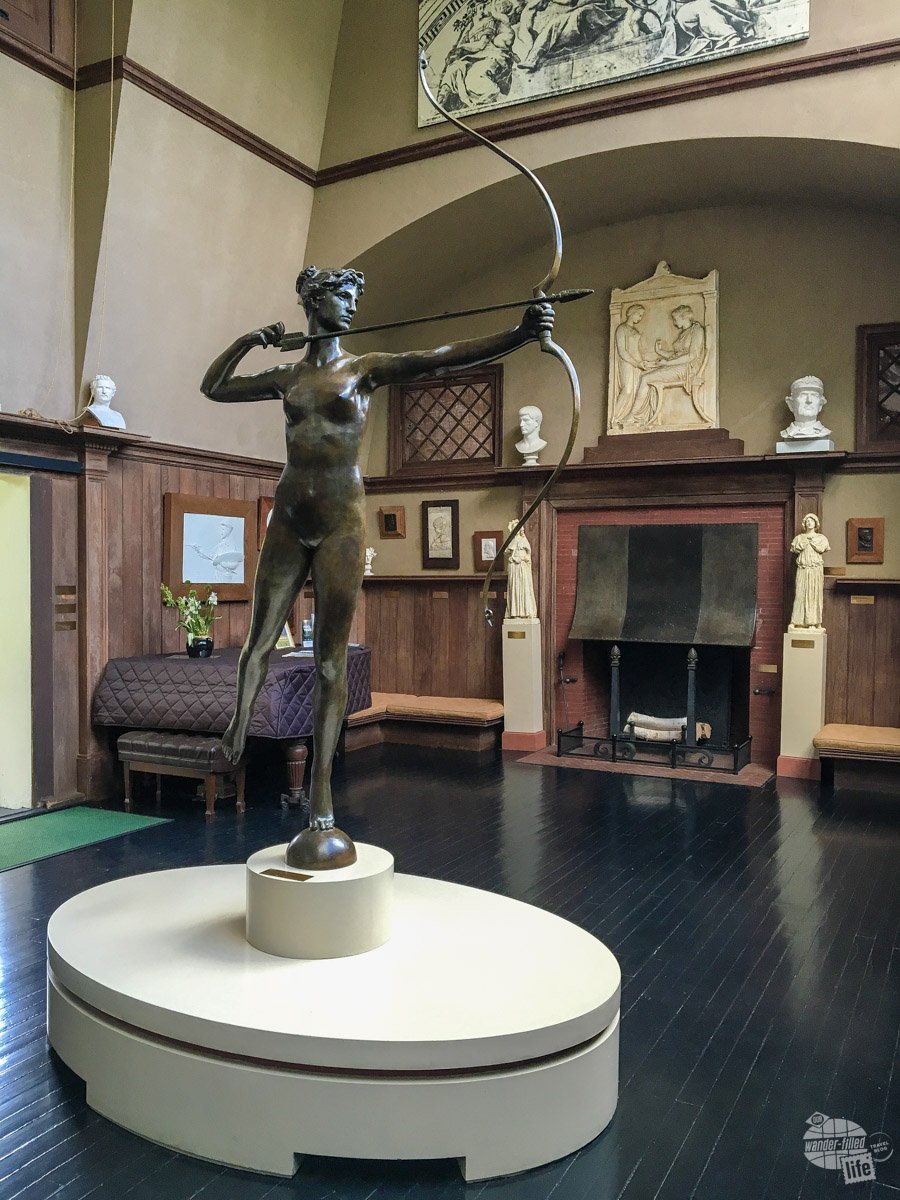
Saint-Gaudens NHP site makes a point to do the same, showing how he worked from clay to plaster to bronze. The home and grounds are very cool in terms of seeing the comfortable summer home he kept. That said, it was seeing his studio that truly made the art come alive for me.
Marsh-Billings-Rockefeller National Historical Park
Vermont’s only National Park site is Marsh-Billings-Rockefeller NHP. The site is a homestead, along with 550 acres of managed woodlands and a working dairy farm run by the Woodstock Foundation. The term managed is important because it means the park practices active forest management, harvesting timber as needed. This is done in an effort to restore the forest to what it was before all of the old-growth forests were destroyed when George Perkins Marsh, author of Man and Nature, grew up here in the early 1800s.

The house was purchased in 1869 by Fredrick Billings, who had made his fortune in San Francisco as a real estate attorney during the ’49 gold rush. He later invested in the railroads and is the man Billings, MT is named after. He pushed to conserve the land around the estate, asking his heirs to keep it intact.
Billings’ granddaughter married Laurance Rockefeller, son of John Rockefeller, Jr., and his family either created or enhanced more than 20 national parks sites. The younger Rockefeller donated the land with the expressed purpose of demonstrating conservation techniques in forestry and dairy farming.

The idea was to demonstrate how New England farmers could work the land without destroying the land. Interestingly, while NPS does not own the property on the hillside across from the house. It does own the development rights to the land so that the view will always be preserved.
This park unit includes 20 miles of trails and old carriage roads. We enjoyed a very nice hike up to The Pogue, the pond on the premises. The site also includes the house, which is not very ostentatious considering it was a Rockefeller’s home. The house contains a collection of landscapes by the artists of the Hudson School which was amazing to see in a home.
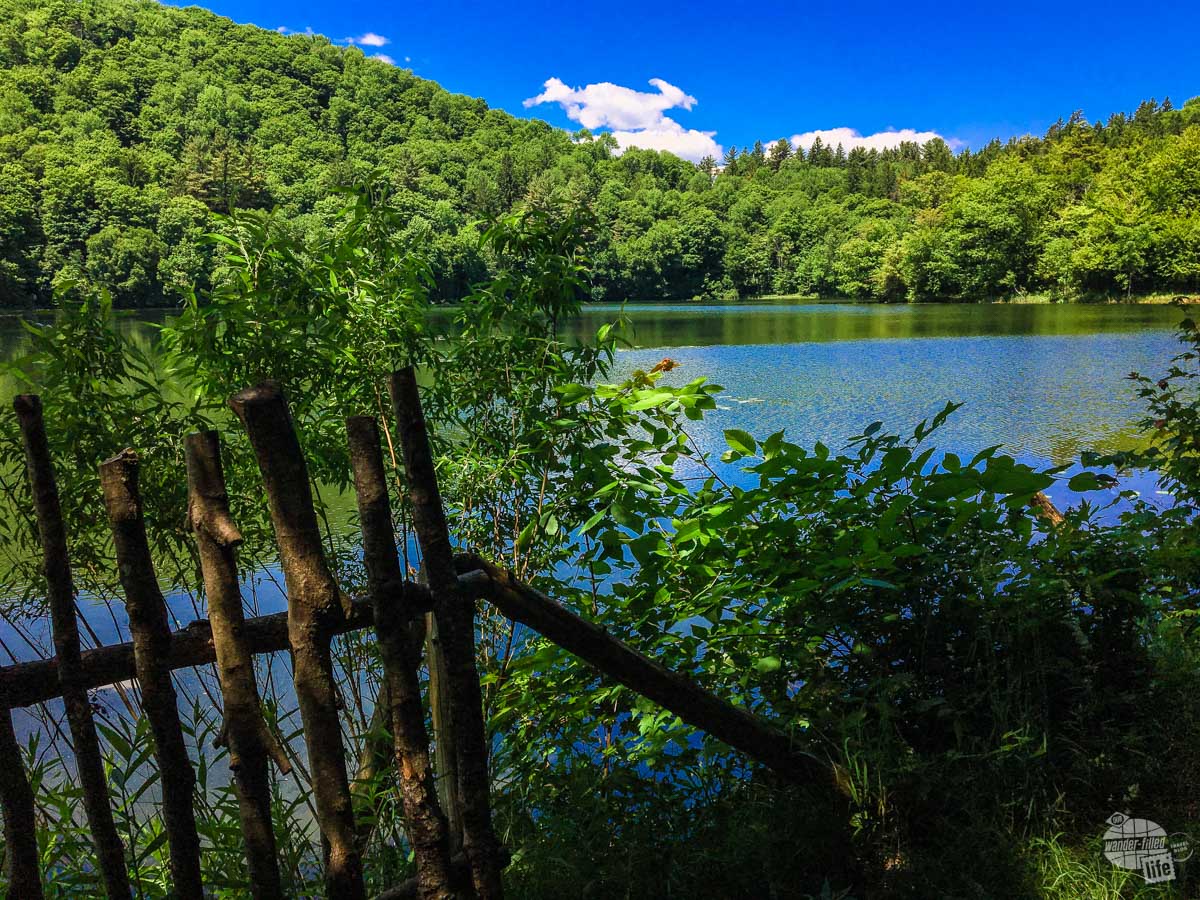
Exploring Woodstock, Vermont
After exploring the parks, we headed back to Woodstock. No, the other Woodstock… Not the one in Georgia, either. The one in Vermont. We’re discovering that there are many cities named Woodstock. The guide book’s description of Woodstock, VT as an idyllic New England town was an understatement.
Read about our home town of Woodstock, GA.
We toured the town and grabbed some food. Lunch was simple and delicious at the Worthy Kitchen in Woodstock, a delightful gastropub. We split a Cuban sandwich and a side of fries, which were outstanding, and sampled some New England brews, myself a smoked lager out of Maine and Bonnie had a dry-hopped cider out of Vermont.

Sugarbush Farms
Then it was time to sample some authentic Vermont fare: cheese and maple syrup. We traipsed across another covered bridge and up a series of dirt roads to Sugarbush Farms, a family farm on the outskirts of Woodstock.
Sugarbush Farms, operated by the same family since 1945, does three things and does them exceptionally well: makes cheese, makes maple syrup and raises livestock.

The farm is simple and they allow guests to tour the grounds, free of charge. They even have a brief video showing how the different seasons change what they do, day-to-day.
We dropped in the tasting room to sample the cheese and syrup and were blown away. The smoked cheddar, especially, was amazing. The farm makes four different types of syrup, from a very light to a dark syrup. The cheese is now in our fridge and some of the darker syrup is in the cabinet for the trip back to Georgia.
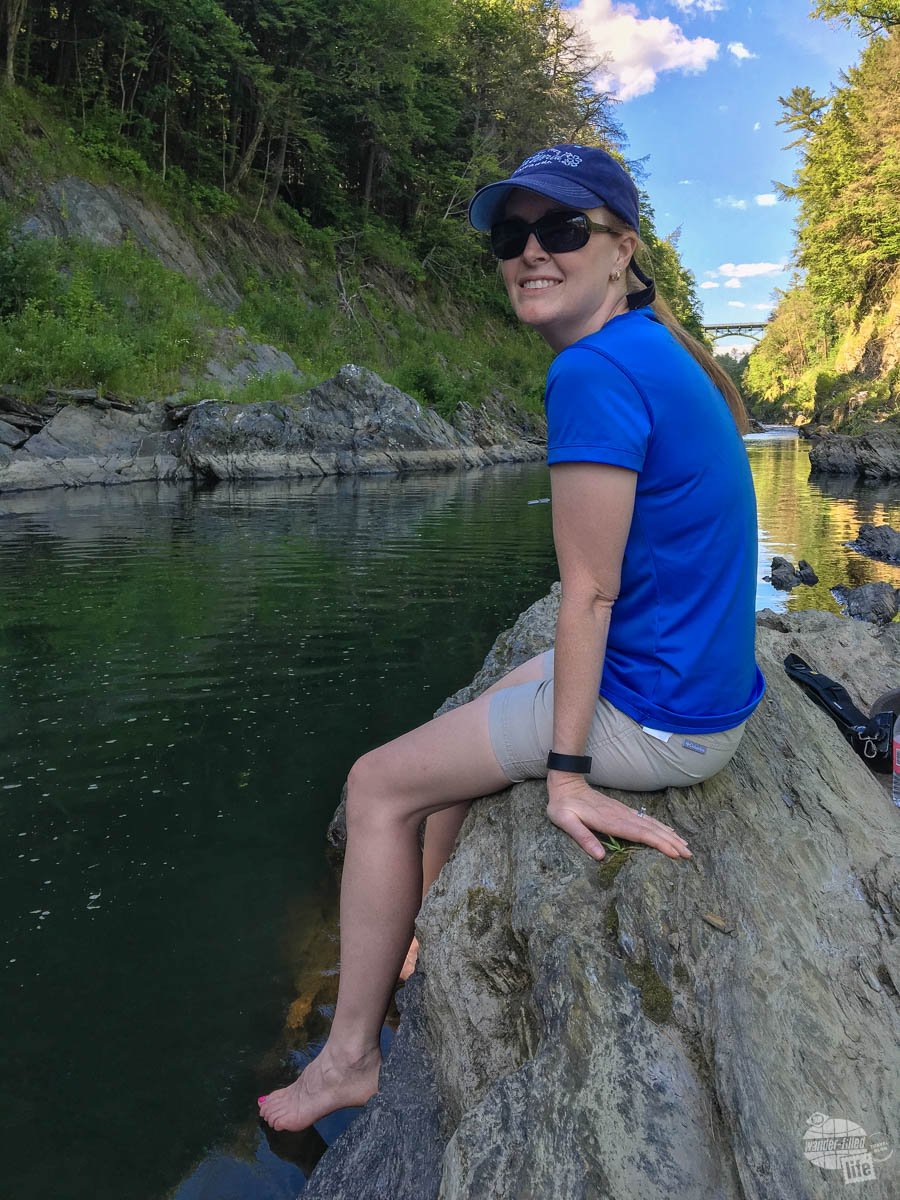
One the way back to the campsite, we stopped off at the Quechee Gorge for a brief hike down to the base of the gorge and to dip our feet in the very cool water.
What a great way to spend the day.
The Green Mountains and Connecticut River Valley
Please forgive me, but I feel I must be a little cliché: “The mountains are calling and I must go.”
John Muir wrote that in a letter to his sister in 1873. Now, you can’t go to a mountain-related anything without finding it on a t-shirt or bumper sticker but that’s for good reason. The words are very powerful to those of us who feel the call.
I have a sincere wanderlust for all places, but the mountains are home, regardless of where they are. I grew up spending every summer in Highlands, NC at my grandparents’ home. My mother would play her John Denver tape on the way up from Clayton, GA. I knew every turn of the road, every hiking trail, every waterfall and every peaceful corner of their property.
Now, as Bonnie and I travel the world, I am still drawn to the mountains and we have spent the last two days engrossed in them.
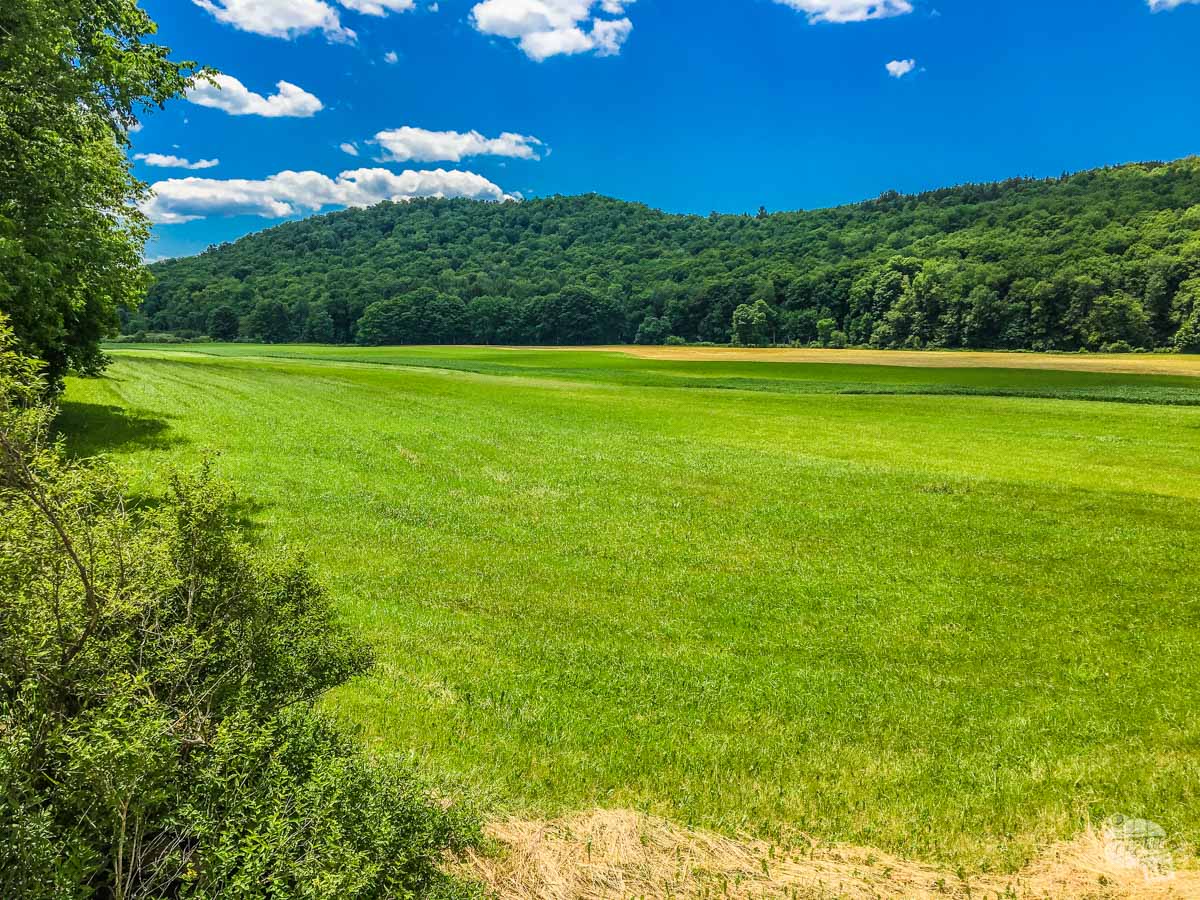
We cruised through rural Vermont again, headed south along the eastern side of the Green Mountains, which run north/south along the western side of the state. Just like the rest of Vermont, it was pleasantly idyllic in the best sort of way, if not very breathtaking.
There were no “OMG” moments of breathtaking beauty. Instead, a gently sloping mountain range, with plenty of just right bucolic bliss.
Lunch in Brattleboro, Vermont
Once we hit the southern edge of the Green Mountains, we turned east for Brattleboro for lunch. The one thing about New England that is very nice for us is the closeness of it all. We are used to road trips out to Montana or Wyoming where each stop is several hours away, but from end-to-end, Vermont is not very wide!

Brattleboro is a relatively large city (for Vermont) at 12,000 or so folks, but with a lively food and music scene. We ate at the top-rated brewpub Whetstone Station along the Connecticut River. Bonnie had the Pesto Artichoke Turkey Wrap and I had the Post Man, an inventive, smoked pork and peach BBQ sandwich and their session IPA. Yes, it was as good as it sounds.
Following lunch, we turned north, shifting over to the New Hampshire side of the river for our drive back up the Connecticut River.
Mt. Washington and the White Mountains
Mt. Washington is the home to the Mt. Washington Weather Observatory, not to mention the worst weather in the world, including the fastest recorded wind speed: 231 mph. The tallest peak in New Hampshire, it was our first stop after relocating camp to the eastern edge of the state.
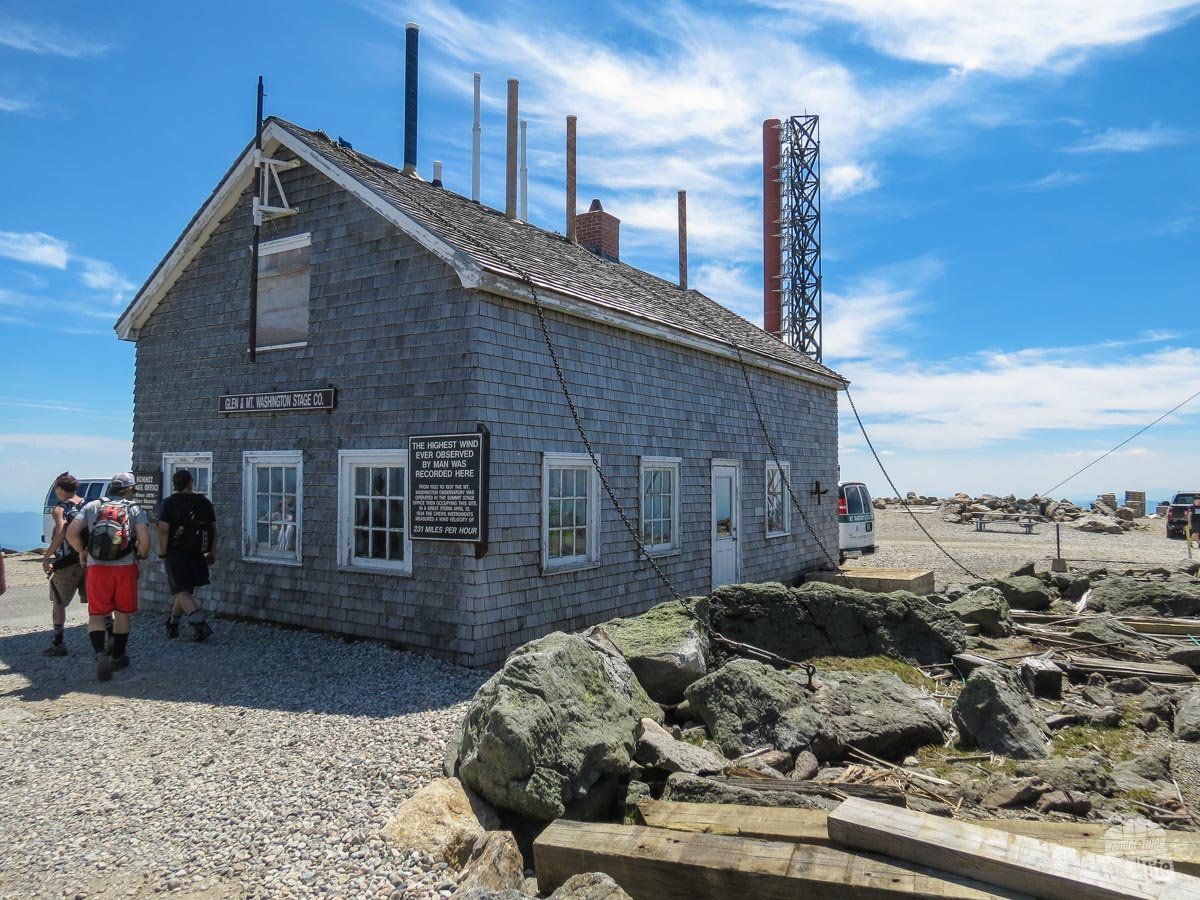
There are multiple ways to get to the top of Mount Washington and each way will either cost you money or sweat: you can hike it from a couple of different trails, you can take a crazy “cog train,” you can take a van tour to the top or you can drive your own vehicle. We opted for the latter option and forked out $39 for our toll to the top.

The road to the top is operated by the Mt. Washington Auto Road company, while the top is a New Hampshire State Park. The road up was easily doable in the truck and I enjoyed the drive. Part of the price of admission, so to speak, was an audio tour CD for drive up. It provided a lot of background info on the mountain.
One of the fun aspects of Mt. Washington is the weather change from the valley to the summit. We were very fortunate to have a bright, sunny day in both the valley and the summit, but while it was nearly 90 degrees in the valley, it was 63 on the summit with 25 mph winds. Still, the view of the surrounding White Mountains was well worth the trip to the top.
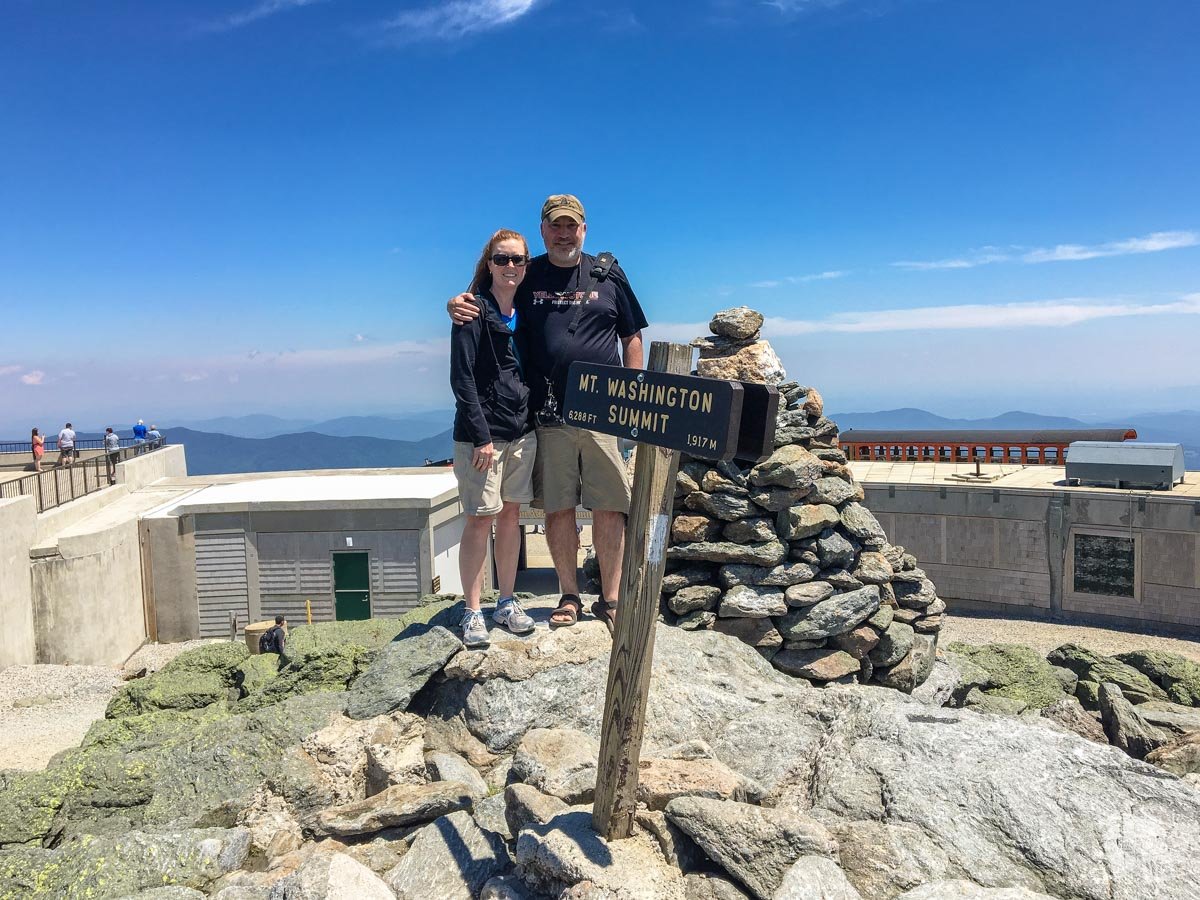
Kancamagus Scenic Byway
Following the drive up Mt. Washington, we headed south to the Kancamagus Scenic Byway, an east-west road transecting the White Mountains. While the Green Mountains were gentle, the White Mountains seemed to spring straight out of the earth, offering a far more dramatic landscape.
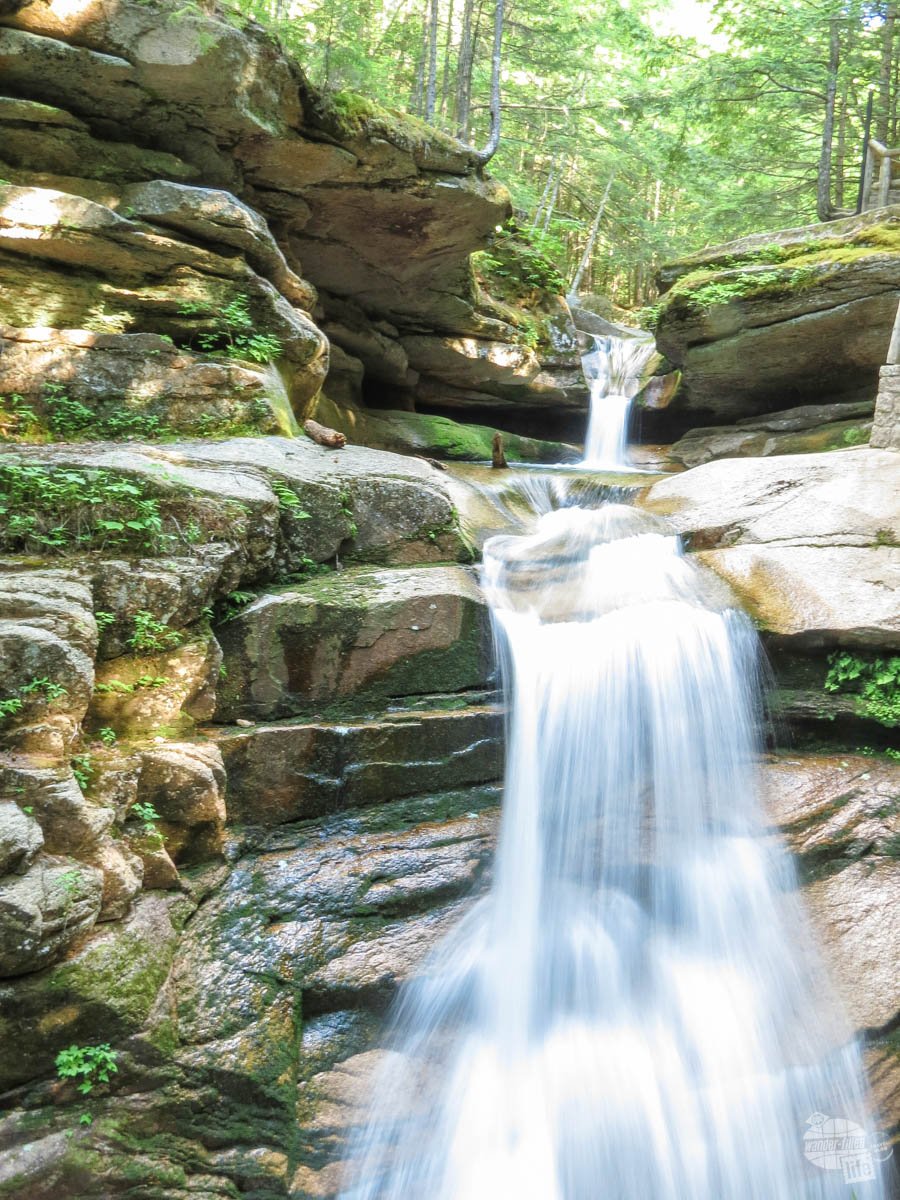
We stopped several times along the road, making a point to get out and walk some of the shorter trails and see some of the sites along the byway. One of the more interesting sites was Sabbaday Falls, a multi-level cascade that does a 90-degree turn in a tight ravine.
Final Thoughts on Vermont and New Hampshire
There is a lot to love and a lot more to see that we didn’t get to in our brief three days in Vermont and New Hampshire. We definitely want to come back to both Woodstock and the White Mountains to spend more time exploring the area.
For more information on visiting Vermont, including road trip ideas, hiking trails and state parks, check out this Complete Vermont Vacation Guide from our friends at Back Road Ramblers.

We were really surprised at the differences between the two states, despite their proximity. Both are gorgeous but New Hampshire was more rugged while Vermont was more pastoral.
Three days was not long enough to explore these two small states.
Check out our full New England National Parks itinerary here.
Travel Resources
What do you use to find a flight?
We use Skyscanner to find deals on flights. Skyscanner has a great interface and compares tons of airlines for the best pricing and routing. That said, it does not always have every airline and some airlines will have better deals on their website. Still, Skyscanner is a great place to start.
Click here to search for a flight.
What do you use to find a hotel?
We typically stay at Hilton properties, so we use the Hilton website. You can find good Hilton Honors discounts or AAA discounts for a hotel there. We make great use of our free night certificates from our Hilton Honors American Express.
Click here to book a Hilton property.
If there are no Hilton properties available, we use TripAdvisor to read reviews and book the hotel. We find we can get the best price that way.
Click here to search for a hotel.
We recently partnered with Stay22 to add interactive maps to each of our destination posts. This will allow you to see a plethora of hotels and vacation rentals all in one responsive map of the area.
What if I need more space than I can get at a hotel?
We use Vrbo for the times when we have rented a cabin for a weekend getaway, like this cabin in Townsend, TN, or needed to rent a house for a large family vacation. We had a great experience with them in terms of refunding deposits when COVID hit and will continue to use them.
Click here to search for a vacation rental.
Who do you use for rental cars?
As a general rule, we book with Hertz for rental cars. We have had nothing but good experiences with them. Plus, we really like unlimited mileage and not worrying about crossing state lines. We have even rented from Hertz overseas in both Slovenia and Croatia.
Click here to book a rental car.
How about booking a cruise?
We have found some amazing prices for booking a cruise through Cruise Direct. We have saved a lot of money on our cruises compared to what we found elsewhere, making a last-minute Bahamas cruise even cheaper.
Click here to book a cruise.
What if I want to rent an RV?
We highly recommend Outdoorsy for RV rentals. We rented a camper van for a week to visit Rocky Mountain National Park for the elk rut and Custer State Park for the Buffalo Round-Up and had a blast. The program was easy to use and we really enjoyed the freedom of having a camper van for that trip.
Click here to rent an RV.
What do you use for booking tours?
We don’t often book tours. Typically, we like to do stuff on our own. That said, there are some experiences you can’t have any other way. So, when we do want to book a tour, we always check Viator first.
Click here to book a tour.
Do you use anything to get discounts on the road?
We make extensive use of both Good Sam and AAA on the road. Good Sam is normally regarded as a discount card for RVers at campgrounds and Camping World but anyone can use the 5 cents off a gallon at the pump at both Pilot and Flying J.
Click here to get a Good Sam membership.
We have had AAA as long as we have been married and it has more than paid for itself in discounts at hotels, aside from the peace of mind of having roadside assistance. Add in paper maps and the ability to get an international driver’s license and it is more than worth it for any traveler out there.
Click here to get a AAA membership.
